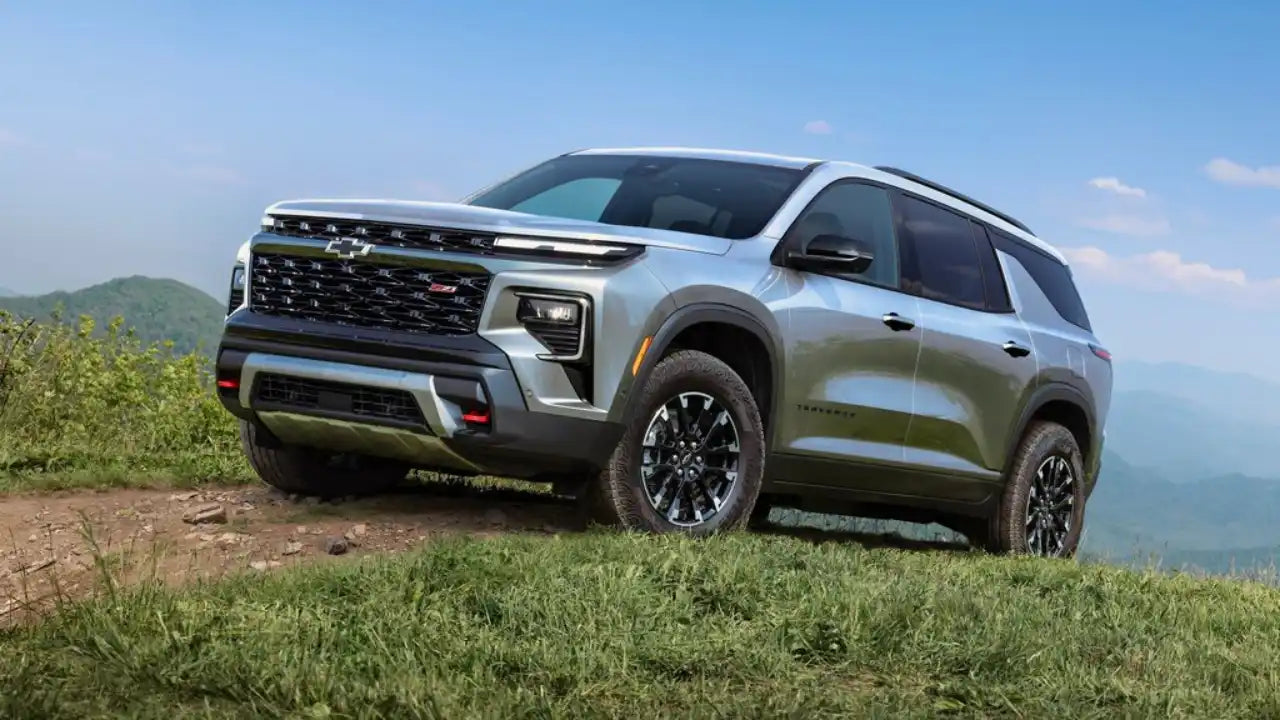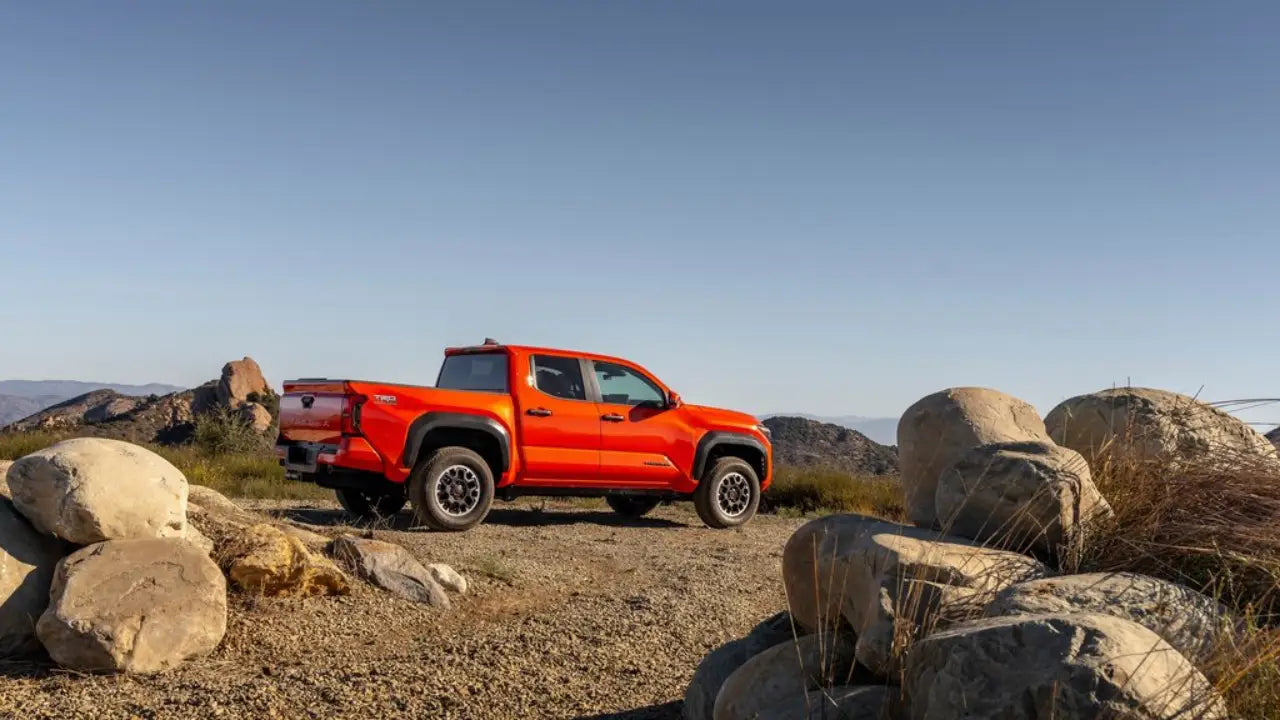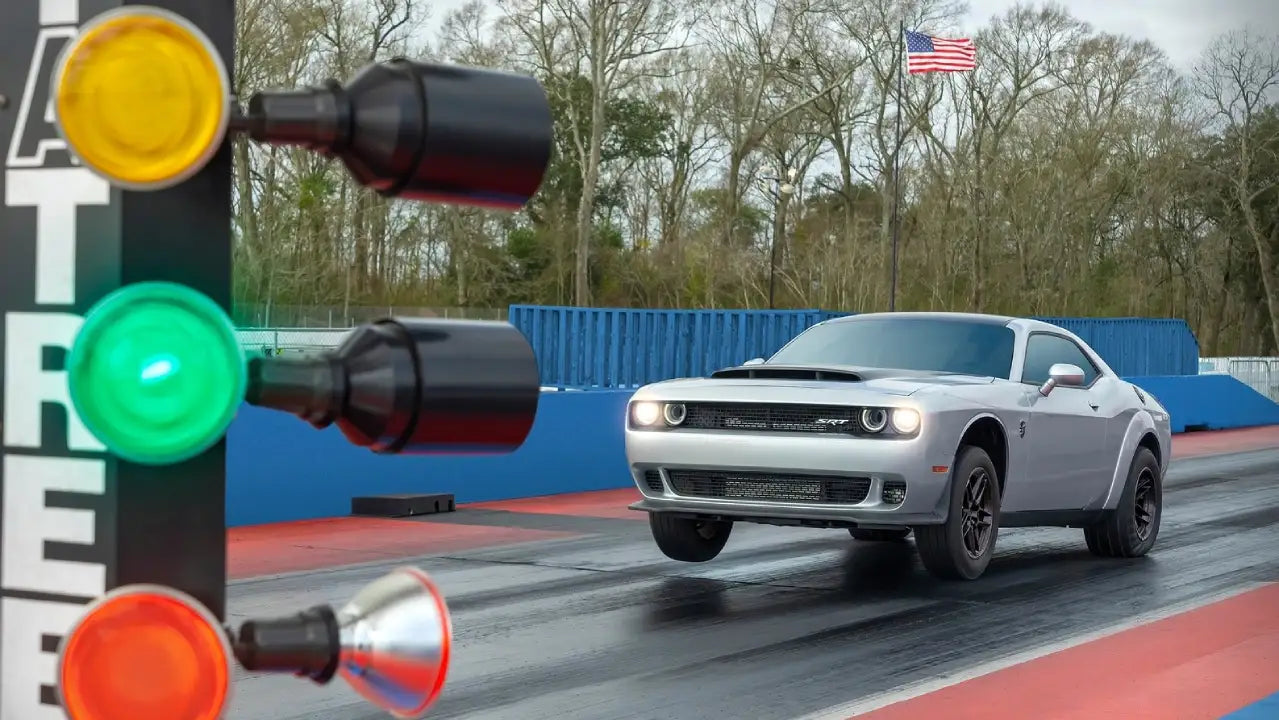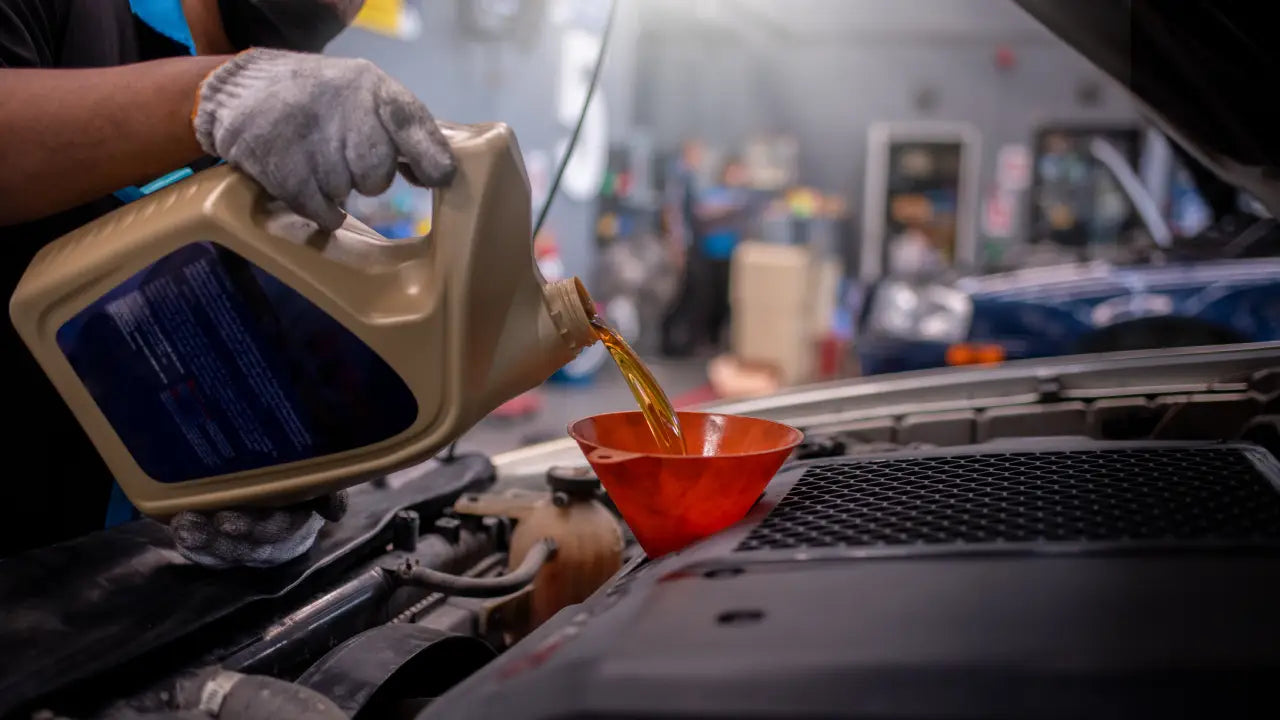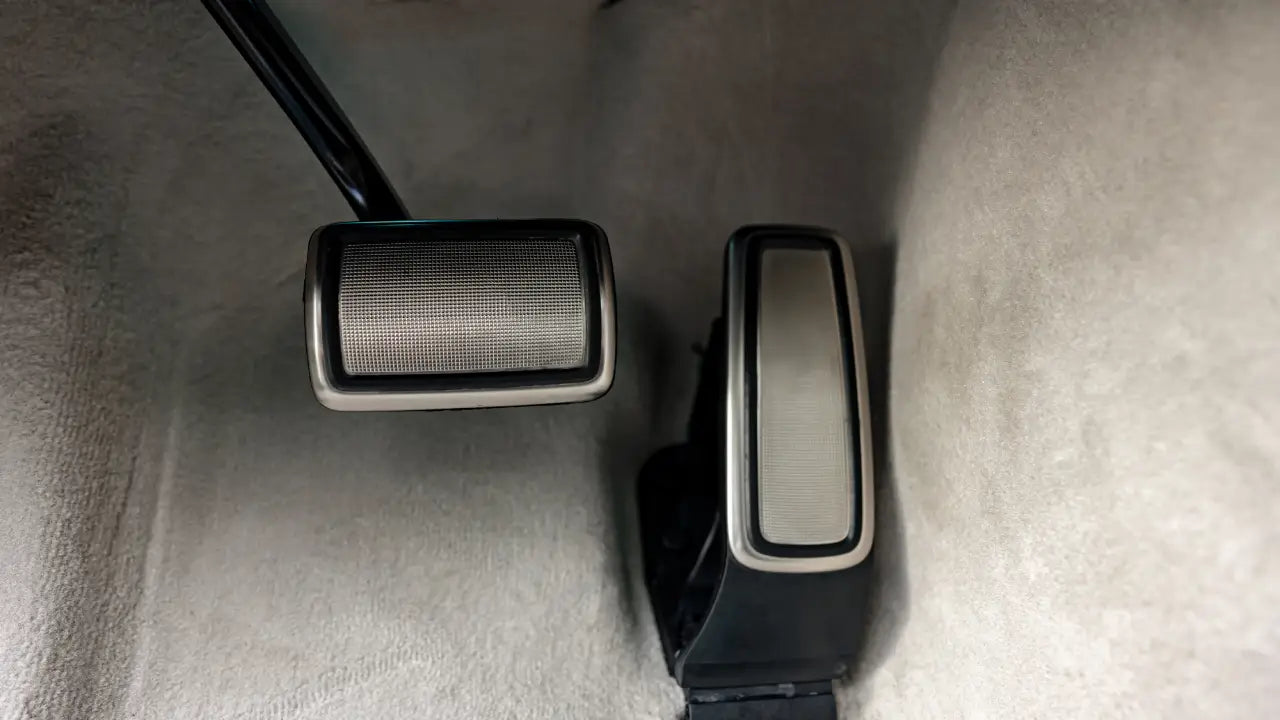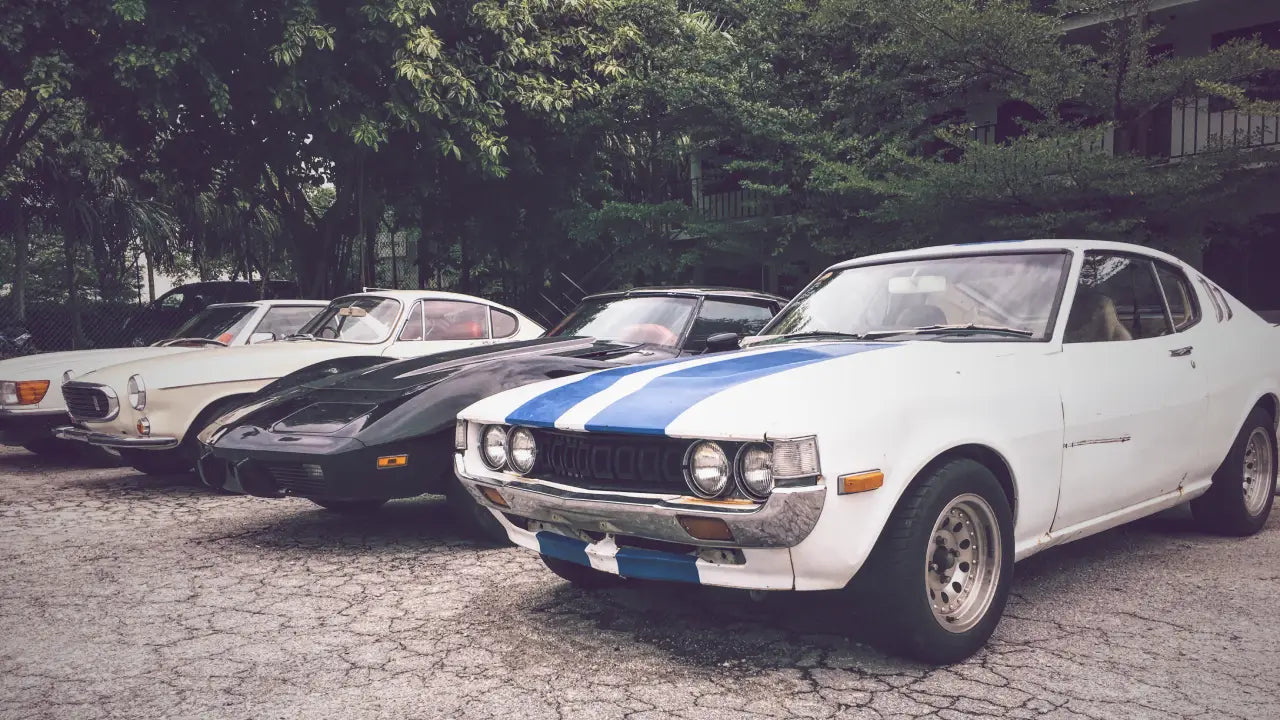Classic cars are more than just vehicles - they're works of art, symbols of bygone eras, and a connection to the past. Restoring a classic car is a labor of love that requires skill, patience, and dedication. Whether you're an automotive enthusiast, a history buff, or simply looking to invest in a unique and valuable piece of automotive history, classic car restoration can be a deeply rewarding experience.
But where do you begin? What are the essential steps to restoring a classic car? What are the common pitfalls to avoid, and what legal considerations do you need to keep in mind? In this article, we'll explore the ins and outs of classic car restoration, from the history of classic cars to the restoration process itself. We'll also provide tips and advice from classic car experts and enthusiasts to help you get started on your own restoration journey. So buckle up, and let's hit the road!
What’s Considered A Classic Car
Before diving into automobile history and telling you about the classic car restoration process, we must talk about the elephant in the room. What is a classic car?
The classic car is a term that’s used very loosely. Everyone has a different definition of the term. It depends on your personal taste, but it also depends on your state’s definition or your preferred car club. Any car made between 1885 and the 1990s can be considered a classic car. But almost no one considers a 1980s Chevrolet Citation a classic. Yes, it is old, and it was wildly popular, but it just wasn’t a good car. It was merely a necessary beast for its time.
The same can’t be said about the 1962 Chevrolet Corvette, which was universally considered a classic. As you can see, there’s no universally agreed upon definition of the classic cars, but when you see one, you’ll know.
The History of Classic Cars: a Journey Through Time
Humanity’s need for faster and more convenient travel is a tale old as time itself. No, don’t worry, we are not going to start all the way from the beginning, but to understand the history of cars, we need to go to Germany, where the first viable automotive, The Benz Patent-Motorwagen, was born. Since 1885, though, automotive has gone through a transformation. Gone are the days of horse-carriage-looking tricycles made out of wood. Now, we have glorious metal beasts that can shake the earth below our feet if we want them to.
Not so fast, though. Because before talking about the current cars, we must explain what happened between 1885 and today to understand what made great cars back then and why we consider them classics worth keeping around.
History of American Cars
American cars have gone through a vast change with each passing year. There were so many great eras, and having more information about those eras can help you find and select the right classic car for you.
By now, almost every gearhead has heard about Detroit’s Big Three: Ford, General Motors, and Chrysler. While those giants have stood the test of time, there was a time we had many more American automobile marques and manufacturers around, around 1900 of them.

We had some fantastic independent manufacturers like Duesenberg, Nash, Hudson, Studebaker, Packard, and many others. The first hit was the Great Depression, and the second one was the Second World War. However, those manufacturers made some of the most expensive American cars ever. If you have a Duesenberg hiding somewhere in your barn, better get those tools ready because you are sitting on a literal gold mine.
Following the Great Depression and World War II, American cars entered a new era of growth and innovation. The post-war period saw an explosion of new models and features, as manufacturers sought to capitalize on the renewed prosperity and consumer demand. The 1950s and 1960s became known as the "golden age" of American cars, with iconic models like the Chevrolet Corvette, Ford Mustang, and Dodge Charger capturing the hearts and imaginations of car enthusiasts around the world.

During this period, American automakers also began experimenting with new technologies and design elements. The rise of the "muscle car" was one of the most significant developments, as manufacturers sought to appeal to young drivers with powerful engines and sleek, sporty designs. Models like the Pontiac GTO, Chevrolet Camaro, and Ford Thunderbird became legends in their own right, helping to define a new era of American automotive innovation.
However, the golden age of American cars was not without its challenges. The 1970s brought a new set of problems, including rising fuel costs and environmental concerns. The oil crisis of 1973 hit the industry hard, forcing manufacturers to re-evaluate their approach to design and production. The malaise era of the late 1970s and early 1980s saw a decline in quality and innovation as manufacturers struggled to adapt to the changing market. Some collectors say that there are no cars worth collecting in the malaise era. While we don’t go that far, it was a dark age for the American automobile industry.
Despite these challenges, American cars continued to evolve and improve through the 1980s and 1990s. Advances in technology and manufacturing allowed for greater efficiency and performance, while new safety regulations helped to make cars safer for drivers and passengers. Models like the Chevrolet Corvette C4, Ford Mustang Fox-body, and Dodge Viper became symbols of American automotive excellence, showcasing the best of what the industry had to offer.

Overall, the history of classic American cars is a fascinating journey through time, full of highs and lows, triumphs and setbacks. From the pre-war and Great Depression eras to the golden age of muscle cars and beyond, each period has its own unique story to tell. Whether you're a seasoned collector or a new enthusiast, you’ll find a car worth restoring.
History of European Cars
European cars have a rich history that spans more than a century, full of innovation, luxury, and performance. From the early days of motoring to modern times, European car manufacturers have played a significant role in shaping the automotive industry, setting trends, and pushing boundaries.
The birth of European car manufacturing can be traced back to the late 19th century, with companies like Peugeot, Mercedes-Benz, and Fiat pioneering the industry. These early cars were often experimental, with manufacturers trying out different engine configurations, designs, and technologies to find the optimal solution.
As the industry matured, European manufacturers began to focus on luxury and performance, catering to the needs of the growing affluent class. Brands like Rolls-Royce, Bentley, and Bugatti became synonymous with opulence and extravagance, while manufacturers like Porsche and Ferrari created high-performance sports cars that set new standards for speed and handling.

The post-war period saw a surge in demand for small, efficient cars, as Europeans struggled to rebuild their economies after the devastation of World War II. Manufacturers like Volkswagen, Fiat, and Renault rose to the challenge, producing affordable, reliable cars that became popular with the masses.
When the wars ended, people wanted speed and performance, and European giants delivered on that premise with Ferrari 250 GTO and the Ferrari F40 have become legendary among car enthusiasts, prized for their stunning design, blistering performance, and undeniable pedigree.
Another Italian automaker that has left an indelible mark on automotive history is Lamborghini. Founded in 1963 by Ferruccio Lamborghini, the company has produced some of the most iconic and recognizable sports cars of all time. Models like the Lamborghini Miura, Countach, and Diablo are revered for their bold, avant-garde design, and their powerful engines.
But the European automotive landscape is not limited to Italian supercars. English roadsters like the MG MGB, Triumph Spitfire, and Austin-Healey Sprite are beloved by enthusiasts for their light, agile handling and classic, understated design.
German vehicles were fantastic, too! The Porsche 911, first introduced in 1963, has become one of the most enduring and recognizable sports cars of all time, with a sleek, aerodynamic body and a reputation for unmatched performance. And then there's the Mercedes-Benz 300SL, which is widely regarded as one of the most beautiful and desirable cars ever made. First introduced in 1954, the 300SL featured a distinctive "gullwing" door design and a powerful six-cylinder engine, cementing its place in automotive history.

Overall, the history of European cars is one of innovation, style, and performance. From the sleek lines of Italian supercars to the understated elegance of British roadsters, there's a classic European car out there for every enthusiast to appreciate and enjoy.
The Value of Classic Cars: Why Restoration Matters
Like most beautiful things in life, cars are not forever. Restoration is the only way we can preserve the essence of the beautiful machines of the old. These vehicles represent not only an era of automotive design and engineering but also a piece of history that's worth preserving. And that's where restoration comes in.
Restoring a classic car involves taking an older, often worn-out vehicle and returning it to its former glory. This process can include everything from rebuilding the engine and replacing the interior to repainting the body and installing new accessories. While it can be challenging and time-consuming, the result is a beautifully restored vehicle that can be appreciated for years to come.

But why is restoration so important when it comes to classic cars? For one, these vehicles are a part of our automotive heritage. They represent a time when cars were built differently, with unique designs and features not found in modern vehicles. By restoring classic cars, we can preserve this history and ensure that future generations can appreciate the craftsmanship and innovation that went into building them.
Restoring classic cars can also help cultivate a passion for vintage vehicles. When we see these cars in their restored state, we're reminded of the beauty and artistry that can be found in automotive design. This can inspire a new generation of car enthusiasts to appreciate classic cars and perhaps even take up the hobby of restoration themselves. When asked about what inspired him to start restoring classic cars, David Flamer, expert classic car restorer, and MOPAR aficionado, answered, “Working with my hands and the ability to drive something that would give people memories of their past.”

Of course, there's also the financial value to consider. Restoring a classic car can be a worthwhile investment, as these vehicles often increase in value over time. A well-restored classic car can fetch a high price at auction or when sold privately, making it a valuable asset for collectors and enthusiasts alike.
Overall, the value of classic cars goes far beyond their monetary worth. These vehicles are a part of our cultural history and a testament to the ingenuity and creativity of past generations. By restoring them, we're able to keep this history alive and inspire future generations to appreciate the artistry and innovation of vintage cars.
Finding and selecting the right classic car for restoration
Restoring a classic car is a labor of love that can be incredibly rewarding, both financially and emotionally. Whether you're an avid car enthusiast or a collector looking to add to your fleet, finding and selecting the right classic car for restoration is an important first step. However, the process can be daunting, especially for beginners who are unfamiliar with the nuances of classic car restoration. From setting your restoration goals and budget to sourcing the right vehicle and assessing its condition, there are many factors to consider before embarking on a restoration project. We'll explore some key subtopics to help you navigate the process of finding and selecting the perfect classic car for restoration and help you achieve your dream of restoring a vintage automobile to its former glory.
Setting Your Restoration Goals and Budget
Before embarking on a classic car restoration project, it's essential to set your restoration goals and budget. Consider your intended use for the vehicle, whether it's for personal enjoyment, display purposes, or resale. Your restoration goals will dictate the level of restoration needed and, therefore, the amount of time, money, and effort you'll need to invest in the project. Establishing a budget upfront will help you stay on track financially and avoid overspending. Also, D.Flamer suggests people make sure to have plenty of time and, whatever their starting budget is, double it.
Researching and Evaluating Classic Car Models
Research is a crucial step in finding and selecting the right classic car for restoration. It's important to narrow down your search to specific models that fit your restoration goals and budget. Research the history of the make and model, including any special features, original specifications, and notable variations. This research will help you determine the availability of parts and, therefore, the feasibility of the restoration project.
Inspecting Classic Cars for Restoration
Inspecting a classic car for restoration is an important step in determining the overall condition of the vehicle. Thoroughly inspect the body, interior, engine, and suspension, looking for signs of wear, damage, rust, or other issues. Take note of any missing or damaged parts and assess whether or not they're replaceable. A comprehensive inspection will help you evaluate the extent of the restoration work required and, therefore, the overall cost and timeline of the project.
Assessing the Condition of Classic Cars
Once you've inspected the classic car, it's time to assess its overall condition. Consider the extent of the damage or wear and the amount of restoration work required to bring the vehicle back to its former glory. Assess the originality of the vehicle and any modifications made over the years. A thorough assessment will help you determine the potential resale value of the vehicle and whether or not it's a worthwhile investment.
Understanding the Rarity and Value of Classic Cars
The rarity and value of a classic car can impact your decision to purchase and restore it. Do your research to determine the rarity of the make and model, including production numbers and surviving examples. This information can help you determine the potential value of the vehicle once restored and whether or not it's a worthwhile investment.
Sourcing Classic Cars: Private Sellers, Dealerships, and Auctions
Classic cars can be sourced from private sellers, dealerships, and auctions. Each option has its pros and cons, and it's important to consider factors such as price, condition, and authenticity when selecting a source. Private sellers may offer a lower price but may not have the resources or expertise to assess the condition of the vehicle accurately. Dealerships may offer a more reliable source of classic cars but may come with a higher price tag. Auctions can be a great way to find rare and unique classic cars, but the bidding process can be competitive and unpredictable.
Negotiating the Purchase Price of Classic Cars
Once you've found the right classic car, it's time to negotiate the purchase price. Do your research to determine the fair market value of the vehicle based on its condition, rarity, and other factors. Be prepared to walk away from a deal that doesn't meet your budget or restoration goals. Remember that restoration costs can add up quickly, so be sure to factor these into your negotiation.
Factoring in Restoration Costs and Timelines
Restoration costs and timelines can vary significantly depending on the extent of the restoration work required. Be sure to factor in the cost of parts, labor, and any specialized services needed. Set realistic timelines for each phase of the restoration process and be prepared for unforeseen delays or complications. Proper planning and budgeting will help ensure a successful restoration project.
The Restoration Process: Steps and Considerations
Restoring a classic car is a labor of love that requires patience, skill, and dedication. It's a journey that can take months or even years, but the end result is a thing of beauty that's sure to turn heads and stir the soul. Whether you're a seasoned car enthusiast or a novice looking to tackle your first restoration project, the process can be both exciting and daunting. But fear not, because we're here to guide you through the restoration process, step by step.
Disassembly and Documentation: Taking Apart the Puzzle
Before any restoration work can begin, the classic car must be disassembled and documented thoroughly. This involves removing all the parts and components, labeling them, and taking pictures or videos of the process. By documenting the disassembly, you will have a clear understanding of the car's original condition and how it should be reassembled. It will also make it easier to identify missing or damaged parts that need replacement. But be careful. D. Flamer suggests, “Just take your time. Gasoline can be very dangerous if not stored correctly. “
Cleaning and Stripping: Clearing the Canvas
Once the classic car has been disassembled, the next step is cleaning and stripping it of all the old paint, rust, and grime. This process involves using chemicals and mechanical methods to remove any dirt or debris, revealing the car's bare metal or body. It's a crucial step in preparing the car for bodywork and painting, as well as rust repair and metalwork.
Rust Repair and Metalwork: Saving the Metal Skeleton
Classic cars are notorious for rust, which can be a major issue if not addressed properly. Rust repair involves removing the affected metal and replacing it with new metal or repairing it with patches. Metalwork also involves repairing any dents or damage to the car's body. This step is crucial for ensuring that the car's metal skeleton is strong and durable.
Bodywork and Paint: The Art of Refinishing
Bodywork and painting are the most visually stunning parts of a classic car restoration project. This step involves repairing any damage to the car's body, filling in dents, and smoothing out any imperfections. Afterward, the car is primed and painted with the color of your choice. A high-quality paint job will make your classic car look like new, and it's a step that requires both skill and patience.
Engine and Mechanical Components: Breathing New Life into the Heart of Your Car
The engine is the heart of any classic car, and it's often the component that requires the most attention during restoration. This step involves rebuilding or replacing worn-out or damaged parts, such as the pistons, valves, and bearings. It's also important to check the transmission, brakes, suspension, and other mechanical components for any damage or wear and replace them as necessary.
Electrical and Wiring: The Nervous System of Your Classic Car
The electrical system of a classic car can be complex, and it's crucial to ensure that it's functioning properly. This step involves inspecting and repairing or replacing the wiring, switches, gauges, and other electrical components. It's also important to upgrade the electrical system to modern standards, such as adding a modern alternator or upgrading to LED lighting.
Interior and Upholstery: Restoring the Inner Beauty
The interior of a classic car is just as important as its exterior. This step involves repairing or replacing the seats, carpet, headliner, and other components to match the car's original style. It's also an opportunity to add modern amenities, such as air conditioning or a sound system, while still maintaining the car's vintage charm.
Reassembly and Final Touches: Putting the Pieces Together
After all the individual components have been restored or replaced, it's time to reassemble the car. This step involves carefully putting all the parts back together, ensuring that they fit properly and function as intended. It's also an opportunity to add final touches, such as polishing the chrome or adding emblems.
Testing and Tuning: Fine-Tuning Your Classic Car for Peak Performance
Once the car has been reassembled, it's time to test and tune it to ensure that it's performing at its best. This step involves adjusting the engine and other mechanical components to ensure optimal performance. It's also important to take
Maintenance and Preservation: Keeping Your Classic Car in Top Shape
After all the hard work that goes into restoring a classic car, it's important to maintain and preserve it to ensure its longevity. This involves regular maintenance, such as oil changes and tire rotations, as well as proper storage and protection from the elements. With proper care, your classic car can continue to turn heads and provide enjoyment for years to come.
Common Challenges and Pitfalls in Classic Car Restoration
While restoring a classic car can be an incredibly rewarding experience, it's not without its challenges and potential pitfalls. Here are some common issues that can arise during the restoration process
Difficulty Finding Parts
Depending on the age and rarity of the car, finding replacement parts can be a significant challenge. Expert restorer David Flamer says sourcing parts is one of the biggest challenges in classic car restoration. He say, “ Finding the time and finding certain parts. Just have to make the time and tell those you know what parts you are looking for.” This is especially true for obscure or rare models, where finding replacement parts may require extensive searching or custom fabrication.
Hidden Damage
When working on an older car, it's not uncommon to uncover hidden damage or issues that weren't immediately apparent. This can range from rusted body panels to mechanical issues that require extensive repair.
Time and Cost Overruns
Restoring a classic car can be a time-consuming and expensive process. It's not uncommon for projects to take longer than expected or for unexpected expenses to arise. This can be especially challenging for individuals who are working within a tight budget or timeline.
Quality of Previous Repairs
If the car has been previously restored or repaired, it's important to assess the quality of the work that was done. Poor repairs can lead to additional issues down the road, which can be frustrating and expensive to correct.
Unrealistic Expectations
Restoring a classic car requires a significant amount of time, patience, and skill. It's important to have realistic expectations about the process and to understand that some things may not be possible or feasible within a given budget or timeline.
Legal Considerations in Classic Car Restoration
Restoring classic cars can be an enjoyable and rewarding hobby, but it's essential to consider legal factors when undertaking such a project. Here are some legal considerations to keep in mind:
Ownership and Registration
Before starting the restoration process, it is necessary to ensure that you are the legal owner of the classic car. If the vehicle is registered, you must transfer ownership to your name. If the car is unregistered or doesn't have a title, you may need to apply for a title and register it with your state's motor vehicle department.
Parts and Modifications
When restoring a classic car, it's essential to ensure that any parts or modifications you make are legal. Check with your local laws to see if there are any restrictions on the types of modifications you can make. Some states have strict emissions standards that may affect which parts you can use on your car.
Safety Standards
When restoring a classic car, it's vital to ensure that the vehicle meets current safety standards. Depending on the age and condition of the car, you may need to update its brakes, seat belts, and other safety features.
Insurance
Once your classic car is restored, it's crucial to have it insured. Classic car insurance policies typically cover vehicles that are at least 15 to 20 years old and meet specific criteria, such as being in good condition, having low mileage, and being used for pleasure rather than daily transportation.
Liability
When you own and operate a classic car, you assume liability for any accidents or injuries that occur while driving it. It's important to have adequate liability insurance to protect yourself in case of an accident.
Import/Export Restrictions
If you're restoring a classic car that was built outside the United States, you may need to comply with import/export restrictions. Certain vehicles may be subject to import bans or require specific documentation to enter the country legally.
Conclusion: Restoring the Past, Driving into the Future
Classic car restoration is more than just fixing up an old car. It's about preserving a piece of history and driving it into the future. It's a passion that requires time, effort, and dedication, but the end result is a one-of-a-kind vehicle that stands out from the crowd.
Throughout this article, we've discussed the ins and outs of classic car restoration, from choosing the right car to legal considerations. We've explored the importance of having a plan, sourcing parts, and seeking professional help when needed.

But perhaps most importantly, we've highlighted the joy and satisfaction that comes from restoring a classic car. There's something special about bringing an old car back to life, breathing new energy into it, and taking it out on the road.
Restoring a classic car isn't just about reliving the past, it's about creating new memories and experiences. Whether it's a weekend drive with friends or a long road trip, a restored classic car can provide an unforgettable adventure. As David Flamer puts it “ Having the ability to work on the vehicle and solve problems is a true feel good aspect. Also, it is great to see the look on peoples faces when they see the vehicle next to modern cars and see how big they are in comparison. When you have a restored vehicle that looks brand new, many are just amazed.”
So, if you're considering restoring a classic car, go for it! With the right tools, resources, and mindset, you can bring a piece of history back to life and drive it into the future.








